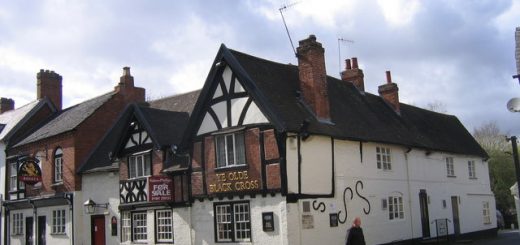Alice Hackney and St.Mary-at-Hill
St Mary-at-Hill is a Grade I listed building on Lovat Lane. The founding of the church dates from 12th century though it has been rebuilt and renovated many times since then. It was during one period of renovation that it became linked with Alice Hackney who’s body was found preserved after being buried for nearly two hundred years. Alice also reputedly haunts the church still.
 In ‘Relics and Memorials of London’ by J.S.Ogilvy, the discovery of Alice is mentioned. ‘This is a church of very ancient foundation, first as a chantry in 1330, by Rope de Urytel. In 1337 Richard de Hackney, citizen, presented Nigellus Dalleye to the living; and in 1497, while digging the foundations for a new church, the body of his wife, Alice Hackney, was found, undecayed and the joints flexible ; after some days it was again laid in the ground. The church was not entirely destroyed in 1666, and on being repaired, the parish of St. Andrew Hubbard was annexed to it. The church of that parish stood where afterwards was the King’s Weighhouse.’
In ‘Relics and Memorials of London’ by J.S.Ogilvy, the discovery of Alice is mentioned. ‘This is a church of very ancient foundation, first as a chantry in 1330, by Rope de Urytel. In 1337 Richard de Hackney, citizen, presented Nigellus Dalleye to the living; and in 1497, while digging the foundations for a new church, the body of his wife, Alice Hackney, was found, undecayed and the joints flexible ; after some days it was again laid in the ground. The church was not entirely destroyed in 1666, and on being repaired, the parish of St. Andrew Hubbard was annexed to it. The church of that parish stood where afterwards was the King’s Weighhouse.’
The 1901 ‘Dictionary of Chronology’ dates the discovery as being three years earlier. ‘Alice Hackney, who had been buried 175 years, was accidentally dug up in the church of St. Mary Hill, London; the skin was whole, and the joints of the arms pliable, 1494.’
The ghost of Alice is said to wander the church looking for the spot where she had first been originally interred, as it seems to be generally believed she was not reburied in the same spot. I am not however sure what evidence there is to support this haunting or how it came to be identified with Alice Hackney.
Beating the Bounds/Rogation Day
This old folklore tradition would take place on Ascension Day, where the parish boundary would be walked by notables carrying rods and children. The children would be lightly whipped at key points en route. The accounts for St.Mary-at-Hill show that 4 shillings would be paid for the provision of fruit for this event.




Recent Comments